Project leader: Prof. J.-L. Scartezzini
Project participants: Anothai Thanachareonkit (PhD Thesis, 2008), Chantal Basurto (PhD Thesis, 2013), Jérôme Kaempf
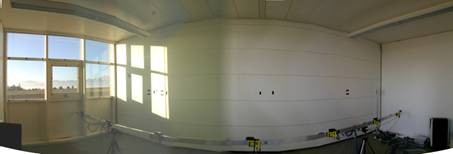
Concept
Complex fenestration systems are widely studied to help redirecting daylight into a room in order to optimize its luminous properties. Daylighting designers and researchers usually use physical and virtual models to analyse daylighting performance within buildings. However, both physical and virtual models do not lead to a perfect analysis of real buildings. In the course of this project, physical and virtual models of a simple building equipped with a complex fenestration system were used to carry out an in-depth analysis of the sources of the error of both modelling methods. Computer simulations of a real object (a daylight test module) carried out using the Radiance program, as well as monitoring of 1:10 scale model placed under a scanning sky simulator were used for that purpose. The sensitivity study of different model parameters, both for simple and complex fenestration systems, were considered as well.
Results
Modelling design rules and identification of significant parameters influencing the model accuracy, have been drawn from this study. Furthermore, Geronimo, a software for the visualisation of the impact of Complex Fenestration Systems (CFS) in office buildings for different sky types (overcast and clear skies) was released, a precious tool for lighting designers and architects. Version 1.0 can be downloaded free of charge.
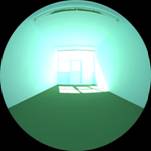 |
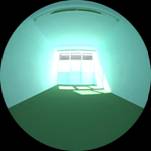 |
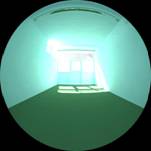 |
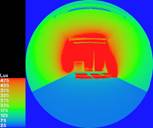 |
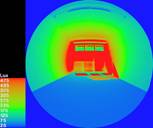 |
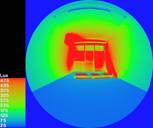 |
Publications
- Multi-criteria analysis for the integrated performance assessment of complex fenestration systems,
- Journal of Daylighting, 2 (2), 32-43, 2015
- Simulating Daylight Propagation through Complex Fenestration Systems in a Urban Context Using Variable Sampling Subdivision Scheme.
- Ray-tracing simulation of complex fenestration systems based on digitally processed BTDF data, J.H. Kämpf, J.-L. Scartezzini, Proceedings of CISBAT 2011, Lausanne, 2011
- Comparing physical and virtual methods for daylight performance modelling including complex fenestration systems,EPFL PhD Thesis no. 4130, Anothaï Thanachareonkit, 2008
- Comparing daylighting performances assessment of buildings within scale models and test modules, A. Thanachareonkit, M. Andersen, J.-L. Scartezzini, in CISBAT Proceedings 2003, pp. 289-294, EPFL, Lausanne, Oct 8-9, 2003
- Comparing daylighting performance assessment of buildings within scale models and test modules, A. Thanachareonkit, M. Andersen, J.-L. Scartezzini, in Solar Energy, 73(2), pp. 168 –182, Elsevier Science, UK, 2003
- Analysis of error sources within daylighting physical and virtual models of buildings, A. Thanachareonkit, J.-L. Scartezzini, D. Robinson, in CISBAT Proceedings 2005, pp. 429-434, EPFL, Lausanne, Sep 28, 2005
- Analysing sources of error in building daylighting performance assessment by comparison of test modules and scale model, A. Thanachareonkit, M. Andersen, J.-L. Scartezzini, in EuroSun Proceedings 2004, pp. 454-462, Freiburg i.B., June 20-23, 2004